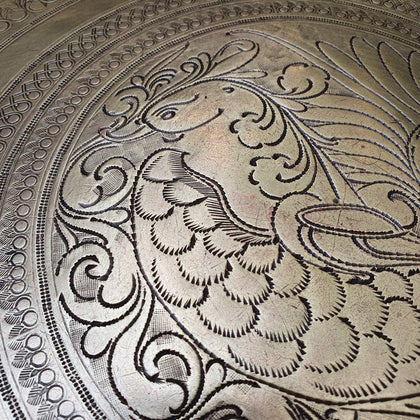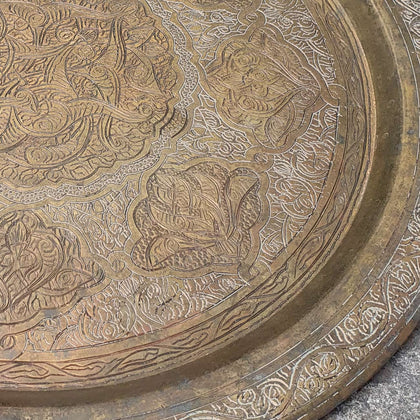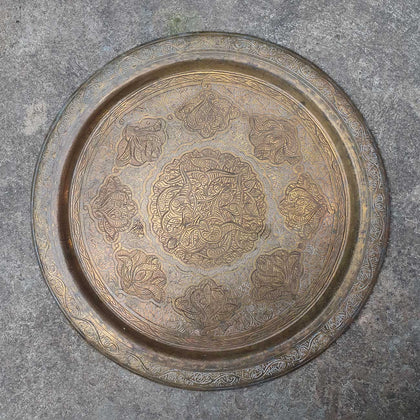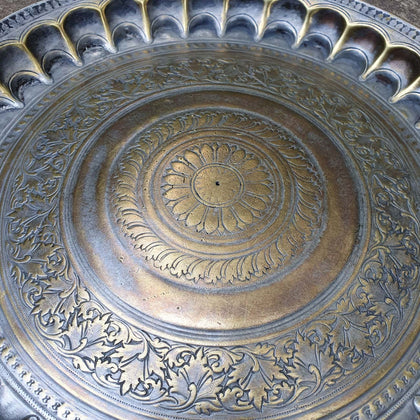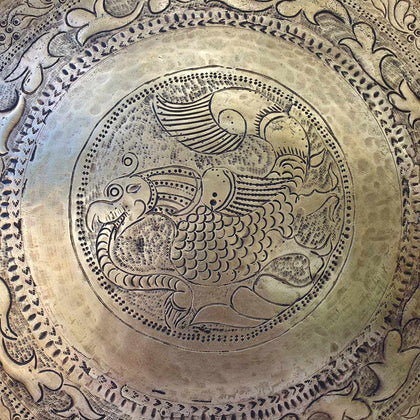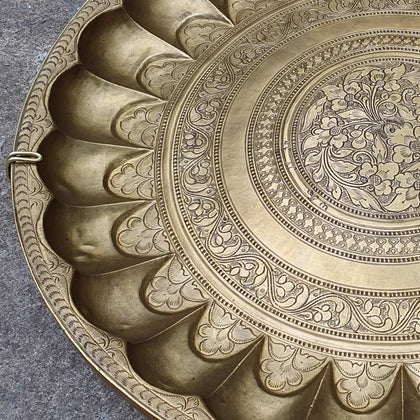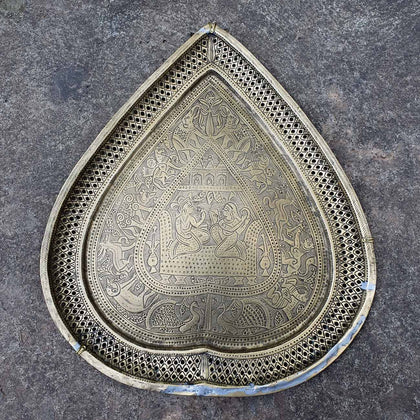The history of the platter or ‘thali’ in India, goes as far back as the Indus Valley Civilization, where examples have been found in excavations at the site of Kalibangan from 3500 BCE – 2500 BCE. In later periods, thalis were used for both religious and domestic purposes, and were often made in gold or silver. In religious practice, these precious metals were believed to have ritualistic purity, and in terms of serving food, the precious metals were believed to detect poison. Thalis were also a way to show the wealth and power of nobility and kings. Miniature paintings dating as far back as the 15th century, depict thalis being used to serve sweet meats and fruits, and as a tray for a hookah, water jug or other vessels.
Besides gold and silver, brass was also used as far back as 1st century BC to make thalis, partly because it was more resistant to wear, but also because it was ‘gold-like’ in appearance, and hence indistinguishable. Unfortunately, many of these items, when damaged over time, would be melted down and the metal reused to make new objects. Very few of these age-old thalis and platters survive today.
These old thalis feature breathtaking and intricate detailing, achieved with the use of repoussé, embossing, and engraving techniques. Repoussé is a metalworking technique, in which a malleable metal is shaped by hammering from the reverse side, to create a design in low relief. Chasing or embossing is a similar technique, in which the piece is hammered on the front side, sinking the metal. The two techniques are often used in conjunction. Engraving is the practice of incising a design onto a hard surface, by cutting grooves into it with a burin.
The thalis are from different parts of South India and Gujarat, with some being of Persian, Egyptian and Sri Lankan origin. The subjects depicted in the thalis range from Hindu gods and goddesses to floral patterns to animals and other mythological figures. The rarity of these finds, coupled with the beauty of the hand work, makes these thalis and platters truly worthy collectibles. All thalis have a handmade brass or copper holder, that has been created specifically for the platters to be hung on the wall.
























































































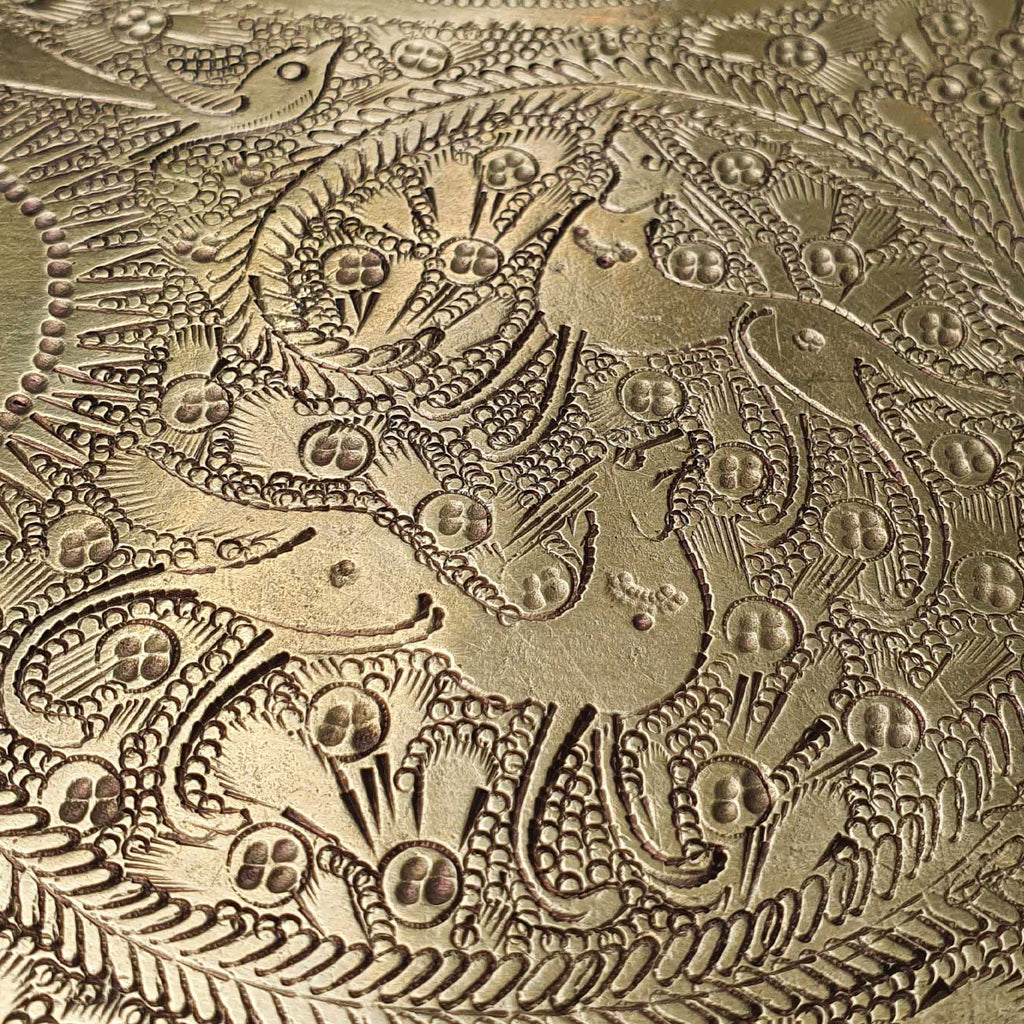

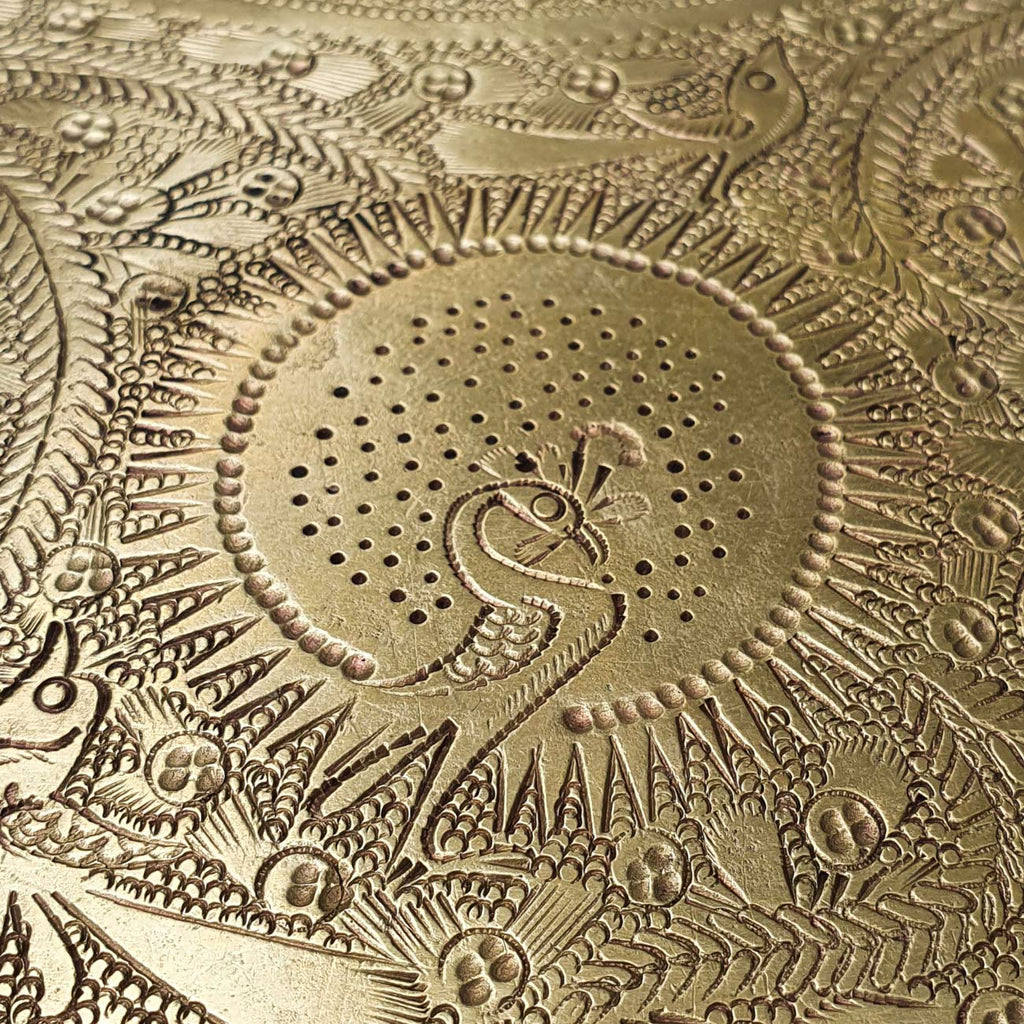

 View Full Screen
View Full Screen


